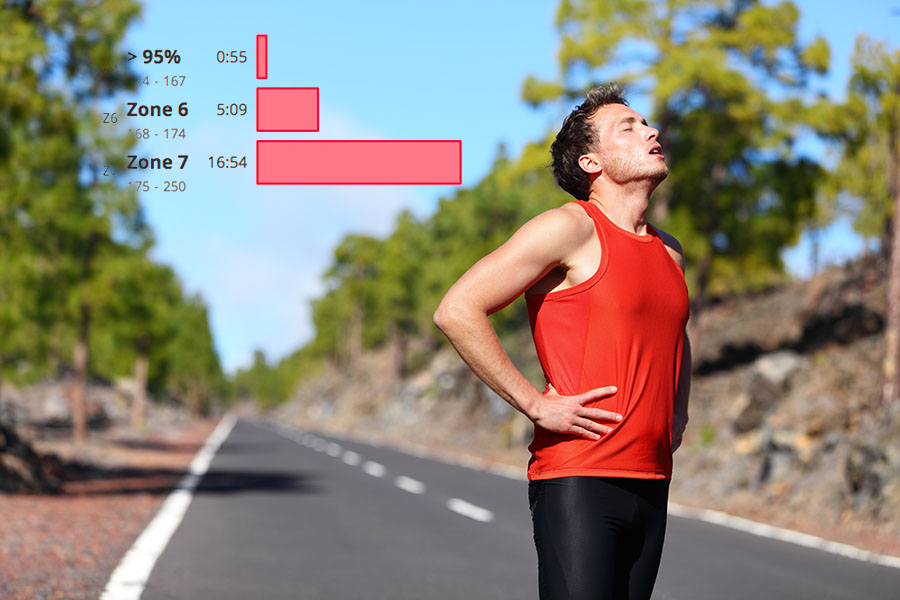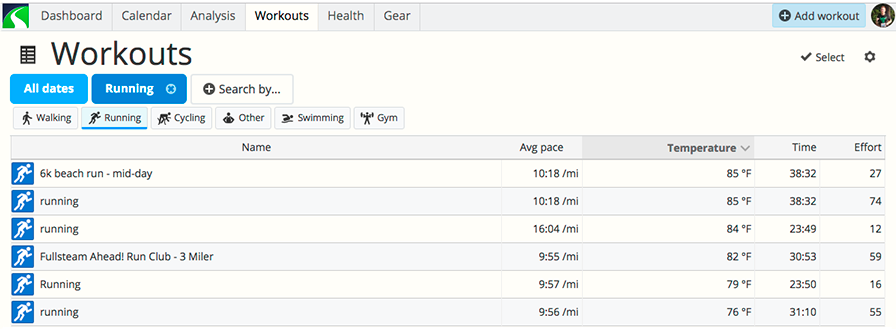How Humidity Impacts Workouts
Learn how heat and humidity impede your performance
The evolutionary success of mankind may have something to do with our lack of hair and our efficient use of sweat. They enabled early humans to run long distances hunting prey without overheating. However, if you exercise in warm climates with high humidity, you lose this advantage. Instead of cooling you off, sweat sticks to you and makes you hotter. If you’re trying to chase down a wildebeest in hot humidity, the bovine is likely to get away.
Training and racing in warm weather and humidity can be dangerous if you’re unprepared, so it’s important to know some basic rules of thumb about these conditions, and to understand what intensity levels you should stay within.
The basics of humidity
The combination of warm weather and high humidity will slow you down and make your workouts much more difficult. However, high humidity levels aren’t an issue in cooler weather. While it's difficult to determine the exact temperature that high humidity becomes a problem (due to all of the variables: body size, personal heat tolerance, etc.), most people need to pay attention when the air temperature hits 77° F (25° C), and the dew point is 57° F (13.9° C).
Think of “dew point” as the temperature at which dew drops form. When the dew point gets close to the temperature, the amount of moisture in the air becomes excessive. When you workout and perspire in these conditions, your sweat starts to fail at cooling you off.

The basics of sweat
The wetness of sweat is not what makes you cool. Cooling happens when your sweat evaporates off of your skin. Energy is required to turn liquid into gas. Your body heat is the energy source, so when your sweat evaporates, it takes your heat with it. When it's hot and the humidity is high, the air is already saturated with moisture, causing this evaporation process to slow down or stop — leaving you drenched and uncomfortably hot.
Why is humidity not problematic in cool weather? Warm air has the capacity to hold a lot more water vapor than cool air. The hotter the air is, the more moisture it can hold. So even when the humidity is high on cooler days, it’s not an issue when exercising outdoors.
For example, I did an outdoor LTHR run in early January when the temperature was a chilly 38° F (3.3° C). According to SportTracks, the humidity was a steep 74% for that run, but it wasn’t a factor. I didn’t even start sweating until 10 minutes in, and when I did, it evaporated and successfully cooled me off. What made that run difficult was going as fast as I could for 30 minutes non-stop. (Learn all about LTHR tests in this dedicated post).
This explains why running in hot, humid weather is so difficult; your body is struggling against two factors: 1) Maintaining your body temperature against the higher air temperature, and 2) The decreased cooling efficiency of your sweat due to humidity.
How to be prepared
A basic Google search will turn up many articles on the topic of staying cool when working out in hot and humid weather. Most of the advice boils down to these essential tips:
- Wear as little as possible: Singlets, light running shorts, etc. The more exposed skin, the better. But, you still need to protect yourself from sunburn, so wear sunblock (if necessary).
- Avoid direct sunlight: Always move to the shady side of the street or trail, wear sunglasses (squinting wastes energy), and wear a visor (so the top of your head can breathe).
- Avoid mid-day, if possible: Cooler early morning or early evening workouts are preferable.
- There's no shame in slowing down and taking breaks: Be smart, heat exhaustion is real and dangerous.
- Stay hydrated: Have at least two chilled water bottles on your bike, and hold a bottle in your hand when running (if you don't have a waist-pack or other kind of hydration system).
- Target your intensity: Working out in heat and humidity is much more taxing. Either target and maintain slower speeds, or plan and execute short duration, high-intensity drills.
Look at your workout history
How can you determine what paces and intensities to target for hot and humid workouts? You can get a good idea simply by looking at your workout history. If you're new and don't have a history to refer to, then planning slow and short workouts is best. But, if you have a season or two under your belt, an accurate answer is easily found.
Users of SportTracks get weather information applied to their entire workout histories. When you signup, you can easily import your workout history from other platforms, and SportTracks will automatically add detailed weather data to every GPS workout you have.

Finding workouts you completed in the past in similar conditions is as simple as visiting the Workouts page in SportTracks. Here you can quickly filter by Sport and Temperature to see how the heat impacted your performance in the past. Selecting a workout from this list enables you to access the complete weather details of the workout, including the humidity level. This will give you a clear idea of what intensities to target.
And who knows... perhaps advanced training platforms like this could have helped hominids more successfully hunt oxen.
Hopefully this article has been helpful! You can learn more about how different kinds of conditions impact your workouts in our articles about wind and cold weather.
| Article written by Sam Mallery, Director of Marketing, Zone Five Software Inc. |
